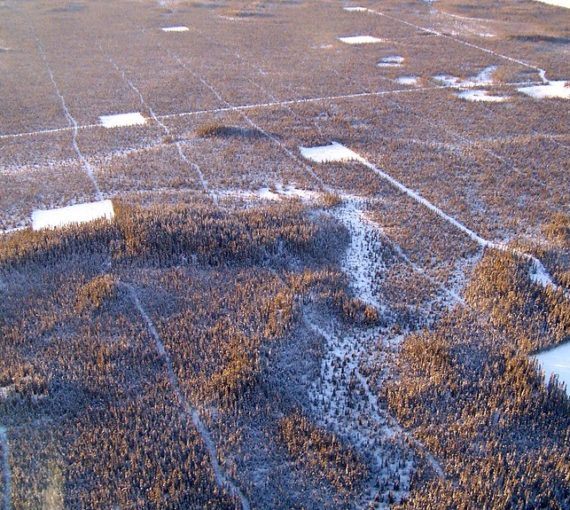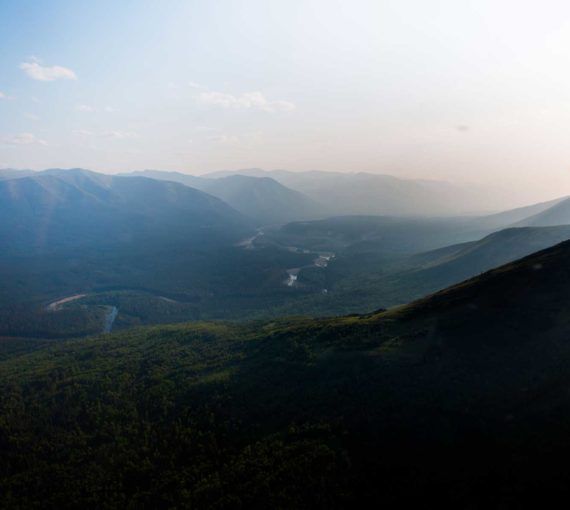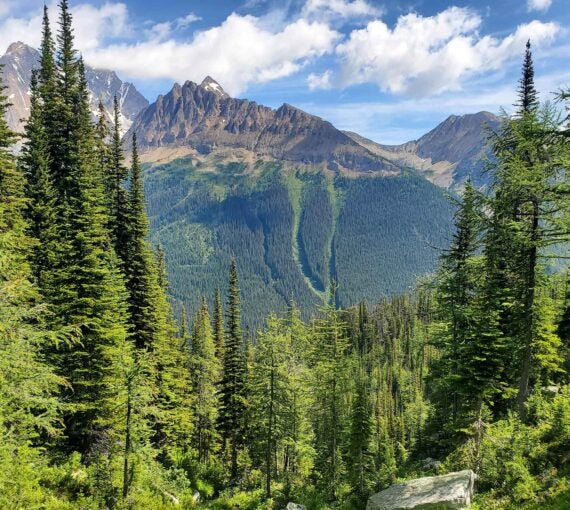Protecting and restoring nature is vital
Forests, oceans, lakes and prairies are a key part of our heritage, identity and well-being. But the ecosystems we rely on are in trouble. Through years of resource extraction, excessive development and consumerism, we have degraded natural ecosystems that sustain wildlife and us.
We need to recognize the value of nature and its role in our survival and well-being. Our struggle with the effects of biodiversity loss and climate disruption highlight that it is time to rekindle our connection with nature. Protection and restoration can help us reduce and adapt to climate change, restore wildlife populations, advance reconciliation with Indigenous Peoples and sustain economies.
We’re not the only ones who rely on clean air, fresh water and biodiversity for survival. Wildlife need them too. Most of Canada’s species at risk are in decline because they are losing their homes. The primary means to help them survive is to restore, connect and maintain their habitats. Protected and conserved areas key tools for helping nature thrive.
Habitat loss and degradation are the primary drivers of wildlife decline provincially, nationally and globally.
Rachel Plotkin, Boreal Project Manager
How to protect and restore wild areas?
Limit human impacts
We must set limits on impacts from industry, agriculture and other development and share the Canada’s lands and waters with wildlife. Too often industrial activities undermine biodiversity. Failure to limit harmful human activity has put boreal caribou and other wildlife species in danger. If they are to recover, industry must reduce its footprint to ensure wildlife has enough space.
Prioritize protection
Restoring nature can take decades, so it is essential to protect remaining intact ecosystems. From the boreal forest to coastal waters, Canada’s ecosystems provide refuge for species that are sensitive to threats such as pollution, climate change and industrial activities. Taking care of vast and interconnected terrestrial and marine ecosystems will also help meet international agreements and national targets.
Establish strong standards
Simply drawing lines on a map doesn’t increase biodiversity. We must create protected areas and management regulations where science says they’re needed most and ensure they are guided by strict standards. They must be based on sound ecological principles and ecosystem needs.
Restore degraded lands and waters
Habitat loss and fragmentation caused by resource extraction activities and development drive wildlife decline in Canada. It is clear that humanity has the power to degrade and to restore the planet. While habitat restoration is important, it is not a substitute for retaining current undisturbed habitat. These two actions must go hand-in-hand to have a meaningful impact.
Our work
Learn how we support the creation of protected areas and ecosystem-based management on land and sea. As we move forward collectively, achieving success will require committing to and investing in habitat restoration initiatives. Nature is worth it!
Indigenous-led conservation creates unique opportunities
Indigenous communities have been stewards of the lands and waters of their traditional territories for thousands of years. They continue that work to this day, leading the way to protect their traditional territories with Indigenous protected and conserved areas, such as the Nuu-chah-nulth initiating establishment of Meares Island Tribal Park in Clayoquot Sound.
IPCAs can help protect Indigenous culture and ways of life by safeguarding and restoring the abundance and biodiversity in their traditional territories. IPCAs can also help to address internationally recognized Indigenous rights — including free, prior and informed consent.
The work of Indigenous communities to create IPCAs is already helping to shift the approach to creating and managing conservation areas in Canada. To be successful, this transition will require redirecting resources to Indigenous Peoples and nations for planning and capacity-building. It will also require a re-examination of protected area jurisdiction and management at all levels of government, recognizing Indigenous law, knowledge and governance. We are working with Indigenous Peoples to help establish IPCAs in marine environments and on land.
Ecological restoration is important for advancing reconciliation with Indigenous Peoples. It helps Indigenous communities practise their cultures and traditional livelihoods in areas where these practices have been compromised or made impossible by ecological degradation and destruction.
Tribal parks are conservation areas envisioned, declared and managed by Indigenous communities. They are also a means for Indigenous communities to assert their responsibilities and rights to steward and manage their lands and resources.
Rachel Plotkin, Boreal Project Manager
Restoring degraded habitats
Given that few ecosystems remain unaffected by humans, restoration is necessary to resolve the climate and biodiversity crises. We must restore what we have damaged to ensure ecosystems can function and provide the basics of life. The UN has established the Decade on Ecosystem Restoration to recognize that we must repair biodiversity for the benefit of all. Scientists say that these 10 years will count most in the fight to avert climate chaos and the loss of millions of plant and animal species.
Restoration projects are not only about services and benefits to wildlife. They help us foster a more reciprocal relationship with nature, one in which taking is offset by giving back. It is time to demonstrate our sense of responsibility by repairing the ecosystems that sustain us.
When we say ‘our lands’ in English, it often represents a position of possession. In Indigenous concepts, it’s more about the relation or responsibility we have toward it.
Melissa Mollen Dupuis, Boreal Campaigner
Helping Canada’s globally significant ecosystems
Help restore biodiversity in coastal waters!
It’s time to turn the tide! Let’s support marine protection and put ocean health firmly on the government's list of priorities.
Connecting the dots
Human-caused, or anthropogenic, disturbances can harm and fragment wildlife habitat, affecting the plants and animals that rely on it for survival. This increases extinction risk for many species. Protecting key parts of their habitat and creating corridors between protected areas gives animals more space to roam and better chances for survival during migration.

Nature-directed stewardship planning
Land stewardship that first restores and protects ecosystems, then builds sustainable local economies, ensures biodiversity and communities thrive together.

Cumulative effects
Many small impacts can add up to serious consequences for conservation and wildlife. Head inside the boreal forest to see how the threatened caribou live and how industrial activity has contributed to population decline.

Marine protected area networks
Networks of marine protected areas safeguard a proportion of the full range of habitats and ecological communities of a given area. They can be an effective way to protect biodiversity and ecological processes and build resilience in the face of the climate emergency. They can help reduce degradation of coastal and marine habitats, provide refuge to endangered marine species and restore depleted fisheries. They are one of many tools for sustainable ocean management.
Protecting and restoring nature builds resilience
Protecting and restoring nature not only helps wild creatures, it also helps humans. As we continue to grapple with the twin ecological crises of biodiversity loss and climate change, Canada’s wilderness areas are essential for clean air, a stable climate and a safe future.
Rising average global temperature is causing extreme weather to become more widespread and intense, making everything from urban water management to agriculture more challenging. Human activity is degrading habitats throughout Canada, and traditional infrastructure is wearing out. Few engineered resources can replicate the services ecosystems provide to counter these problems. Restored and protected areas are a part of a range of nature-based solutions that help address these issues while creating many co-benefits.
Protecting and restoring nature creates spaces where wildlife can thrive. This variety of life builds resilience by helping ecosystems withstand climate change impacts and continue to provide ecosystem services. Furthermore, intact ecosystems sequester and store carbon, helping mitigate climate change.

Industrial damage threatens Blueberry River’s way of life
Industrial activity has profoundly affected the Blueberry River First Nations in northern B.C. Their traditional territory once supported healthy moose and caribou populations. Today, it’s difficult if not impossible to walk half a kilometre before hitting a road, seismic line or other industrial infrastructure.
Protect the boreal and caribou that live there
As industrial resource extraction activities in the boreal forest continue to expand without limits, caribou continue to decline.
Industry misinformation fuels caribou decline
Habitat disturbance leads to caribou decline. Yet some industry associations have been using the same tactics as climate science deniers to sow seeds of doubt, resulting in stalled recovery measures.
Nature and economy
Business practices need to change so that we respect, protect and restore all our relations in the natural world. For far too long we have pitted conservation efforts against the economy, but nature underpins our economy and there is room for both. We must seek solutions that optimize industrial and ecological values, and where it is not possible to do this, we must decide what kind of world we want to leave for future generations.
Protecting nature pays off. For example, wetlands offer approximately $10,000 to $20,000 per hectare per year in ecosystem services such as wildlife habitat, flood risk reduction and water purification.
Restoring nature is not limited to unpopulated spaces, and it can take many forms. Some solutions like natural infrastructure and phytotechnology are effective and economical in urban areas too. They help mitigate the impacts of extreme weather events such as heavy rains and urban heat islands, reduce pressure on infrastructure and make our living environments more resilient in the face of climatic changes.
Expert views
Healthy ecosystems can reduce community infrastructure costs
The solution to the twin challenges of aging infrastructure and the need to protect the ecosystems may lie under our feet. MNAI’s findings show how natural assets can deliver core services to communities at a lower cost compared to traditional infrastructure.
Former Environmental Economist and Policy Analyst



